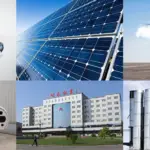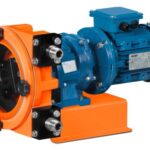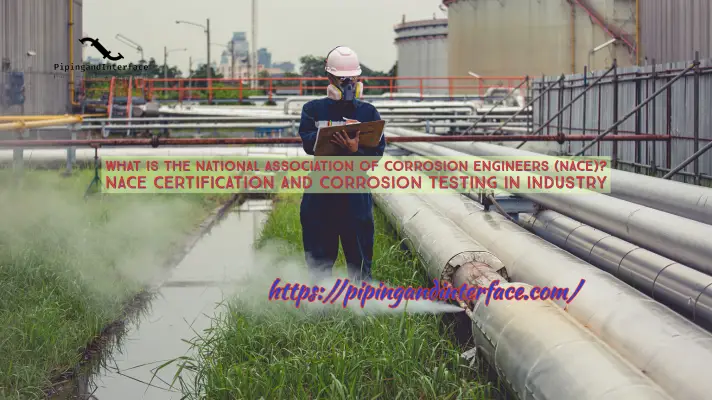The oil and gas industry demands materials that can withstand harsh environments, including high pressures, temperatures, and corrosive substances. Stainless Steels (SS), Duplex Stainless Steels (DSS), and Super Duplex Stainless Steels (SDSS) are among the most commonly used materials in these applications due to their exceptional mechanical properties, corrosion resistance, and durability. In this blog, we will explore these materials in detail with a focus on their application in the oil and gas industry, particularly in piping systems.
Stainless Steels (SS) in Piping Systems
Stainless Steel (SS) is an iron-based alloy that contains a minimum of 10.5% chromium, which provides its characteristic corrosion resistance. The chromium forms a thin, protective oxide layer on the steel surface, which prevents further corrosion. Other elements such as nickel, molybdenum, and carbon can be added to enhance specific properties.
There are several types of stainless steel, categorized based on their microstructure:
Austenitic Stainless Steel:
It contains high levels of chromium and nickel, making it highly resistant to corrosion. The most common grades are 304 and 316, with 316 offering enhanced resistance to chloride environments due to its molybdenum content.
Ferritic Stainless Steel:
It contains chromium but little to no nickel. It is magnetic and has good corrosion resistance, particularly in mild environments. Examples include 430 and 446.
Martensitic Stainless Steel:
It contains a higher carbon content and can be hardened by heat treatment. It is magnetic and less corrosion-resistant than austenitic and ferritic steels. Common grades include 410 and 420.
Duplex Stainless Steel (DSS):
Combines the features of austenitic and ferritic steels, offering superior strength and corrosion resistance. Duplex steels will be discussed in more detail later.
Precipitation-Hardening Stainless Steel:
This contains alloying elements such as aluminum, copper, and titanium, which allow for increased strength through heat treatment.
Duplex Stainless Steel (DSS) in Piping Systems
Duplex Stainless Steel (DSS) is a category of stainless steel that combines the features of austenitic and ferritic stainless steel. Typically, it contains approximately 22-25% chromium, 5-7% nickel, 3-4% molybdenum, and lower carbon content. The balanced composition leads to a microstructure consisting of roughly equal parts austenite and ferrite. More details about DSS is mentioned here.
Some common grades of DSS include:
- 2205: The most widely used grade, offering excellent strength, stress corrosion cracking resistance, and weldability.
- 2304: A leaner grade with less molybdenum and nickel, offering good general corrosion resistance at a lower cost.
- 2507: A super duplex grade with higher chromium, molybdenum, and nitrogen content, offering enhanced corrosion resistance and strength.
Super Duplex Stainless Steels (SDSS) in Piping Systems
Super Duplex Stainless Steel (SDSS) is an enhanced version of Duplex Stainless Steel, with a higher content of chromium (25-27%), molybdenum (3-5%), and nitrogen. The microstructure remains a balanced mix of austenite and ferrite, but the enhanced alloying elements provide even greater strength and corrosion resistance.
Common grades of SDSS include:
- 2507: The most common super duplex grade, offering excellent corrosion resistance and strength, particularly in aggressive environments.
- Zeron 100: A proprietary grade with a similar composition to 2507 but with enhanced pitting and crevice corrosion resistance.
- S32760: A super duplex grade that includes tungsten for additional strength and corrosion resistance in highly aggressive environments.
Differences Between SS, DSS, and SDSS
Here’s a table summarizing the major differences between Stainless Steel (SS), Duplex Stainless Steel (DSS), and Super Duplex Stainless Steel (SDSS) with respect to piping applications in the oil and gas industry:
| Criteria | Stainless Steel (SS) | Duplex Stainless Steel (DSS) | Super Duplex Stainless Steel (SDSS) |
|---|---|---|---|
| Composition | 10.5%+ Chromium, varying Nickel and Molybdenum content | ~22-25% Chromium, 5-7% Nickel, 3-4% Molybdenum | ~25-27% Chromium, 5-7% Nickel, 3-5% Molybdenum |
| Microstructure | Austenitic, Ferritic, Martensitic | Balanced Austenite and Ferrite (~50/50) | Balanced Austenite and Ferrite (~50/50) |
| Corrosion Resistance | Good (varies by grade; austenitic grades like 316 are highly resistant) | Superior (better resistance to pitting, crevice corrosion, and stress corrosion cracking) | Exceptional (highest resistance, especially in aggressive environments) |
| Strength | Moderate | High (nearly twice the yield strength of SS) | Very High (even higher yield strength than DSS) |
| Cost | Lower (depends on grade and market price of nickel) | Moderate (more expensive than SS but cost-effective over time) | Higher (most expensive due to alloy content and superior properties) |
| Weldability | Excellent (easy to weld with standard techniques) | Good (requires controlled heat input to avoid detrimental phases) | Moderate (more challenging; requires specialized techniques and post-weld treatment) |
| Fabricability | Good (easy to form and machine) | Moderate (requires care to avoid work hardening and phase imbalances) | More Difficult (requires precise control during forming and machining) |
| Temperature Resistance | Good (austenitic grades perform well at both high and low temperatures) | Moderate (good at moderate temperatures but less tough at very low temps) | Excellent (performs well at both cryogenic and elevated temperatures) |
| Applications | General piping, low to moderate corrosive environments | Offshore platforms, subsea pipelines, chemical processing | Subsea equipment, high-pressure pipelines, heat exchangers in aggressive environments |
| Lifecycle and Durability | Moderate (requires maintenance in corrosive environments) | High (long service life with reduced maintenance) | Very High (exceptional durability in extreme conditions, minimal maintenance) |
| Common Grades | 304, 316, 410 | 2205, 2304 | 2507, Zeron 100, S32760 |
| Stress Corrosion Cracking | Susceptible (especially in chloride environments) | Resistant (better than SS, especially in chlorides) | Highly Resistant (ideal for sour gas and chloride-rich environments) |
| Weight and Thickness | Standard thickness required | Thinner sections possible due to higher strength | Thinnest sections possible, reducing overall weight |
This table provides a concise comparison of the key aspects of SS, DSS, and SDSS as used in piping applications within the oil and gas industry. Each material has its advantages, making it suitable for different applications depending on the specific requirements of the environment and operational conditions.
In conclusion, Stainless Steels (SS), Duplex Stainless Steels (DSS), and Super Duplex Stainless Steels (SDSS) each offer unique properties that make them suitable for different applications within the oil and gas industry. SS provides a good balance of corrosion resistance, strength, and cost for many general applications. DSS offers enhanced strength and corrosion resistance, making it ideal for more demanding environments. SDSS, with its superior performance, is the material of choice for the most extreme conditions, particularly in offshore and subsea applications.






